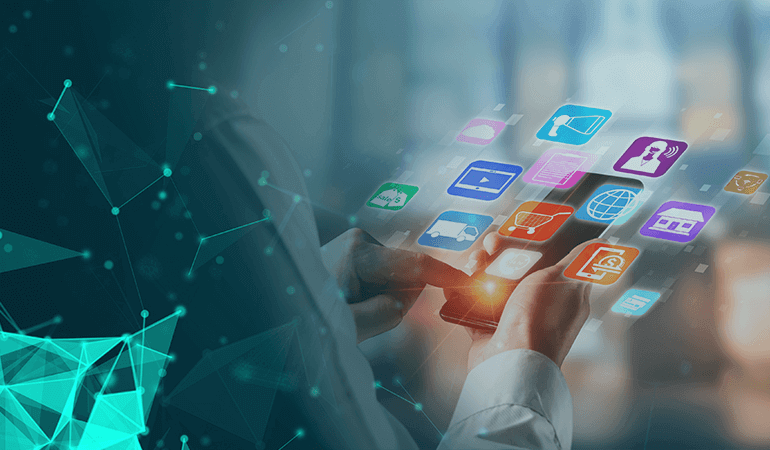Have you ever pondered why certain marketing initiatives effortlessly attract attention, create engagement, and increase revenue, while others fall flat? The solution resides in psychology. Understanding how customers think, feel, and behave may provide you a competitive advantage in marketing. You may use psychological concepts to develop appealing communications, increase conversions, and build long-term customer connections.
In this article, we will look at nine psychological concepts for marketing that can help you alter your approach. Whether you’re a business owner, marketer, or entrepreneur, these insights can help you influence choices and achieve success.
9 Powerful Psychology Concepts for Marketing Success
1. The Power of Reciprocity
Why it works:
People are obliged to reciprocate favours or gestures.
Marketing Applications:
- Provide free trials, excellent material, or little freebies.
- Offer unique offers to loyal clients.
- To create trust, implement “give-before-you-ask” tactics.
Example: Amazon Prime’s free delivery encourages repeat purchases, which reinforces consumer loyalty.
2. Scarcity and urgency
Why does it work:
Fear of missing out (FOMO) drives impulsive behaviour.
Marketing Applications:
- Use time-sensitive promotions (“Limited-time offer – ends tonight!”).
- Highlight low stock levels (for example, “Only 3 left in stock!”).
- Promote exclusive memberships.
Example: Booking.com advertises “Only 1 room left!” to encourage customers to book immediately.
3. Social Proof and Bandwagon Effect
Why it works:
People trust recommendations and gravitate towards popular options.
Marketing Applications:
- Use customer reviews, testimonials, and case studies as marketing tools.
- Display social media follower numbers and engagement.
- Highlight the “best-selling” or “most popular” items.
Example: Apple stresses its enormous user base to boost product credibility.
4. The Decoy Effect
Why it works: A properly positioned alternative makes a different choice more appealing.
Marketing Applications:
- Provide three price schemes, with the middle one being the best value.
- Create “decoy” items to emphasise the attraction of a more profitable one.
Example: Streaming services, such as Netflix, employ tiered pricing to encourage subscribers to upgrade to premium plans.
Also Read – Top 10 AI Tools for Digital Marketing in 2025
5. Authority Bias
Why does it work: People believe experts and authority figures.
Marketing tip:
- Use endorsements from industry professionals or influencers.
- Display certificates, prizes, and trust badges.
- Present authoritative guest blogs or interviews.
Example: Skin care companies collaborate with dermatologists to boost their credibility.
6. Anchoring Bias
Why it works: People depend substantially on the first piece of information they encounter.
Marketing Applications:
- Display higher initial pricing before reductions (“Was £199, now £99!”).
- To increase perceived value, place luxury items next to less expensive choices.
Example: In retail establishments, pricey things are displayed first to make mid-range products appear more reasonable.
7. Colour Psychology
Why it works:
Colours evoke emotions and influence decision-making.
Marketing Application:
- Use red to indicate urgency and impulsive buying.
- Incorporate blue to represent trust and professionalism.
- Apply green to eco-friendly and health-related companies.
Example: McDonald’s uses red and yellow to stimulate appetite and urgency.
8. The Zeigarnik Effect
Why does it work:
People tend to remember incomplete projects better than completed ones.
Marketing tip:
- Use progress bars to motivate consumers to complete sign-ups.
- Provide teaser material that needs action to gain full access.
Example: LinkedIn’s profile completion bar encourages users to enter further information.
9. The Mere Exposure Effect
Why does it work:
Familiarity breeds preference.
Marketing Applications:
- Use advertising to retarget potential buyers.
- Increase brand awareness with social media and email marketing.
- Utilise consistent branding and message.
Example: Coca-Cola uses recurrent marketing campaigns to establish brand recognition throughout the world.
Conclusion
By combining these nine psychological concepts for marketing, you can create campaigns that fascinate, convince, and convert. These methods, which range from utilising social proof to building urgency, increase the impact of your messaging and create genuine outcomes.
Want to improve your marketing approach even further? Begin using these concepts immediately and watch your business blossom!
FAQs
Marketing heavily relies on consumer psychology, a field of applied psychology that studies how and why people make purchasing decisions. This discipline combines cognitive psychology, behavioural psychology, and social psychology to investigate how emotions, perceptions, motivations, and social influences determine consumer behaviour.
Consumer psychology enables marketers to look deeper into the mental processes that drive customer decisions, ranging from how individuals react to colours and visuals to pricing strategies and persuasive messages. By deciphering these psychological triggers, marketers can modify their campaigns to more effectively reach their target audience and enhance conversions.
Psychology is based on numerous fundamental notions that help to explain human conduct. The following are especially significant in a marketing context:
Perception: Perception is how people perceive and make sense of information. In marketing, perception influences brand image and user experience.
Motivation: The driving force behind activities is motivation. Marketers utilise motivation theory to create messages that meet their customers' wants and aspirations.
Learning: This refers to how previous experiences and repeated exposure shape future conduct. Associative learning is a common mechanism for developing brand loyalty.
Emotion: Emotions influence decision-making. Emotional branding establishes long-term connections between consumers and brands.
Social Influence: People are impacted by the thoughts and behaviours of others (for example, reviews and celebrity endorsements).
Cognition: This refers to mental activities such as attention, memory, and problem-solving. Cognitive psychology influences how marketers organise and deliver information.
Behaviour: Observable behaviours and habits. Understanding behavioural patterns allows marketers to forecast how people will react to certain promotions.
These key concepts serve as the psychological foundation for good marketing tactics, allowing marketers to create campaigns that are consistent with how people think and behave.
The psychological theory of marketing is the use of psychological factors to affect consumer behaviour and decision-making. Rather than focussing just on logic or pricing, this theory contends that marketing success is dependent on understanding the emotions, motivations, and mental shortcuts that influence human decisions.
Modern marketing methods are based on several well-established psychological theories, such as:
- Maslow’s Hierarchy of Needs – According to this idea, people are motivated by a hierarchy of wants, ranging from fundamental (food and safety) to sophisticated (esteem and self-actualization). Marketers align their products with these requirements in order to appeal to the appropriate emotional drivers.
- Classical Conditioning (Pavlov) - Brands combine their products with positive stimuli (e.g., catchy music, appealing pictures) to elicit favourable emotional responses.
- Social Proof (Cialdini's Principles of Persuasion) - The hypothesis that people are more inclined to adopt certain habits if they witness others doing the same, which is why reviews and testimonials are so powerful.
- Cognitive Dissonance Theory - After completing a purchase, people seek reinforcement that they made the proper decision. Marketing that reinforces client satisfaction after the purchase helps to eliminate dissonance and increase loyalty.
These theories work in tandem to shape consumer perceptions, increase engagement, and drive purchase intent.
Psychology plays an important and multifaceted function in marketing by allowing firms to connect more effectively with customers. Rather than guessing what customers would like, psychological insights enable marketers to forecast behaviours, create convincing messaging, and establish emotional connections.
Here are some important roles psychology plays in marketing:
- Understanding Customer Needs: Psychological research can assist marketers in understanding what motivates different sorts of consumers and how their requirements change over time.
- Improving Message Persuasion: Psychological principles like scarcity, authority, and reciprocity can improve the effectiveness of calls-to-action and marketing text.
- Designing Better User Experiences: Cognitive psychology guides online and product design, ensuring that layouts, fonts, and images improve usability and engagement.
- Building Brand Loyalty: Marketers may develop brand identities that stick with consumers by using emotional connections and memory.
- Shaping Buying Decisions: Psychology describes how people balance options, absorb information, and employ mental shortcuts (heuristics), which marketers exploit to affect decision-making at critical touchpoints.
Finally, psychology is more than just an afterthought in marketing; it serves as the foundation for customer-centric, convincing, and effective campaigns.





